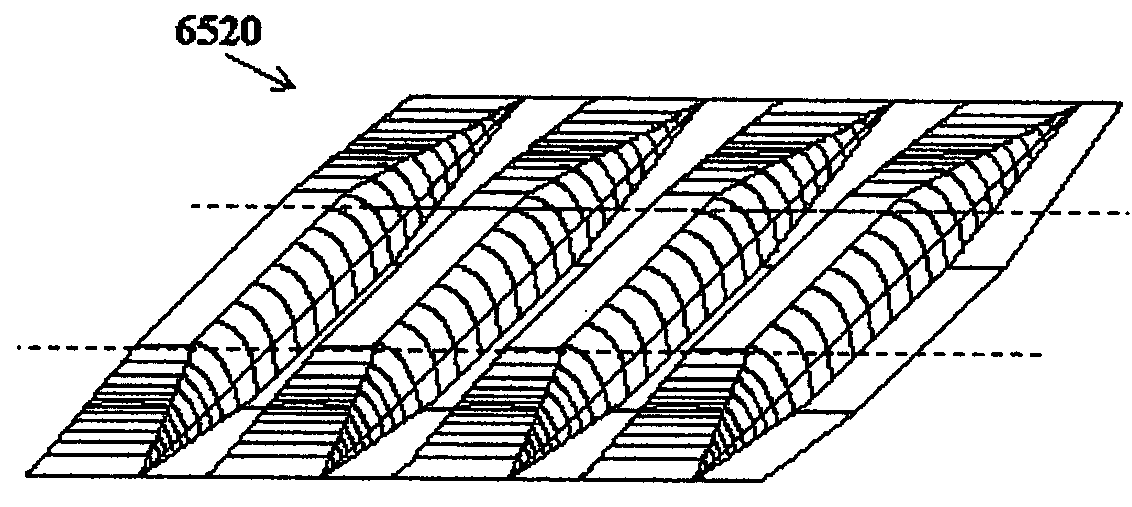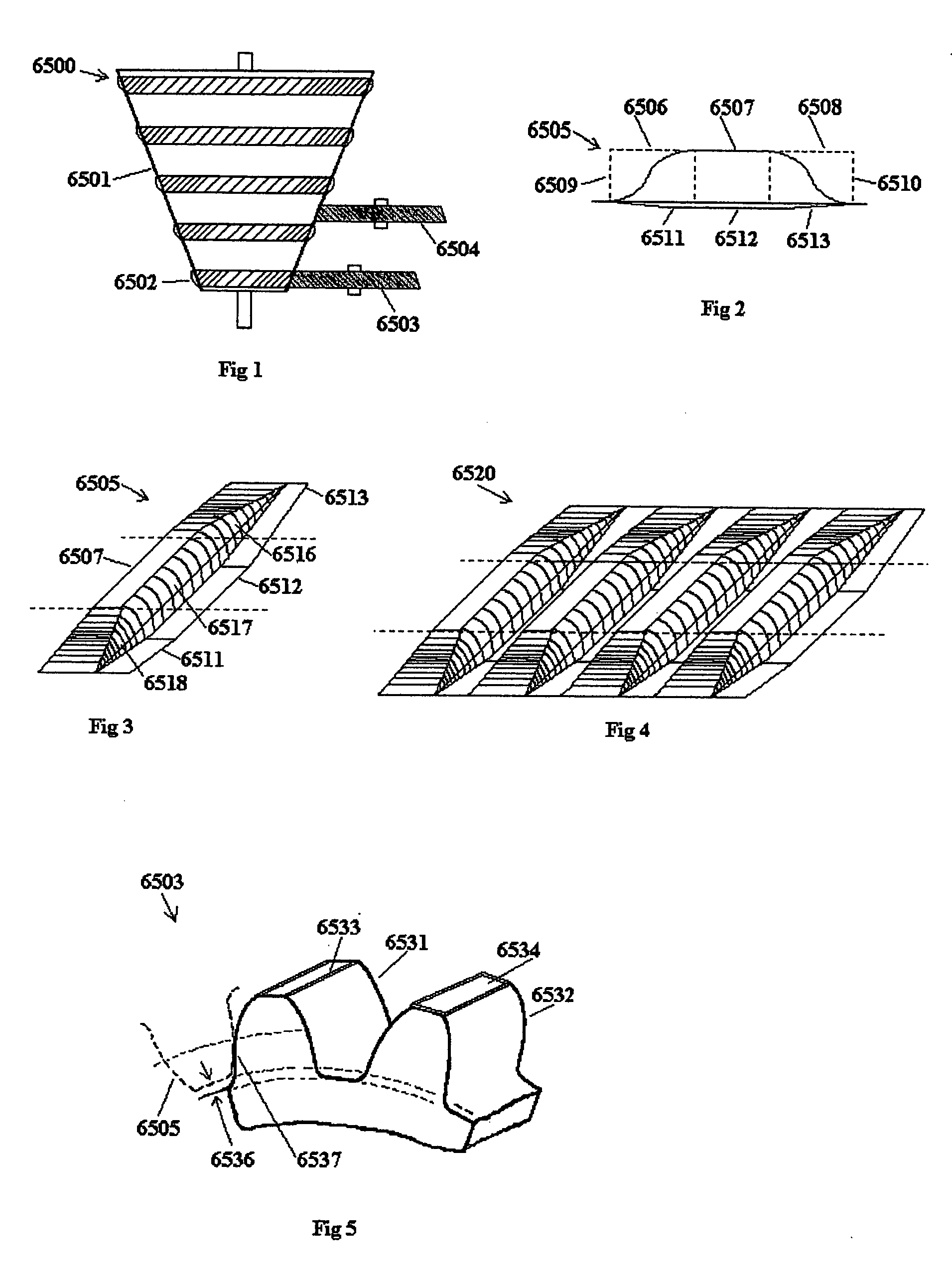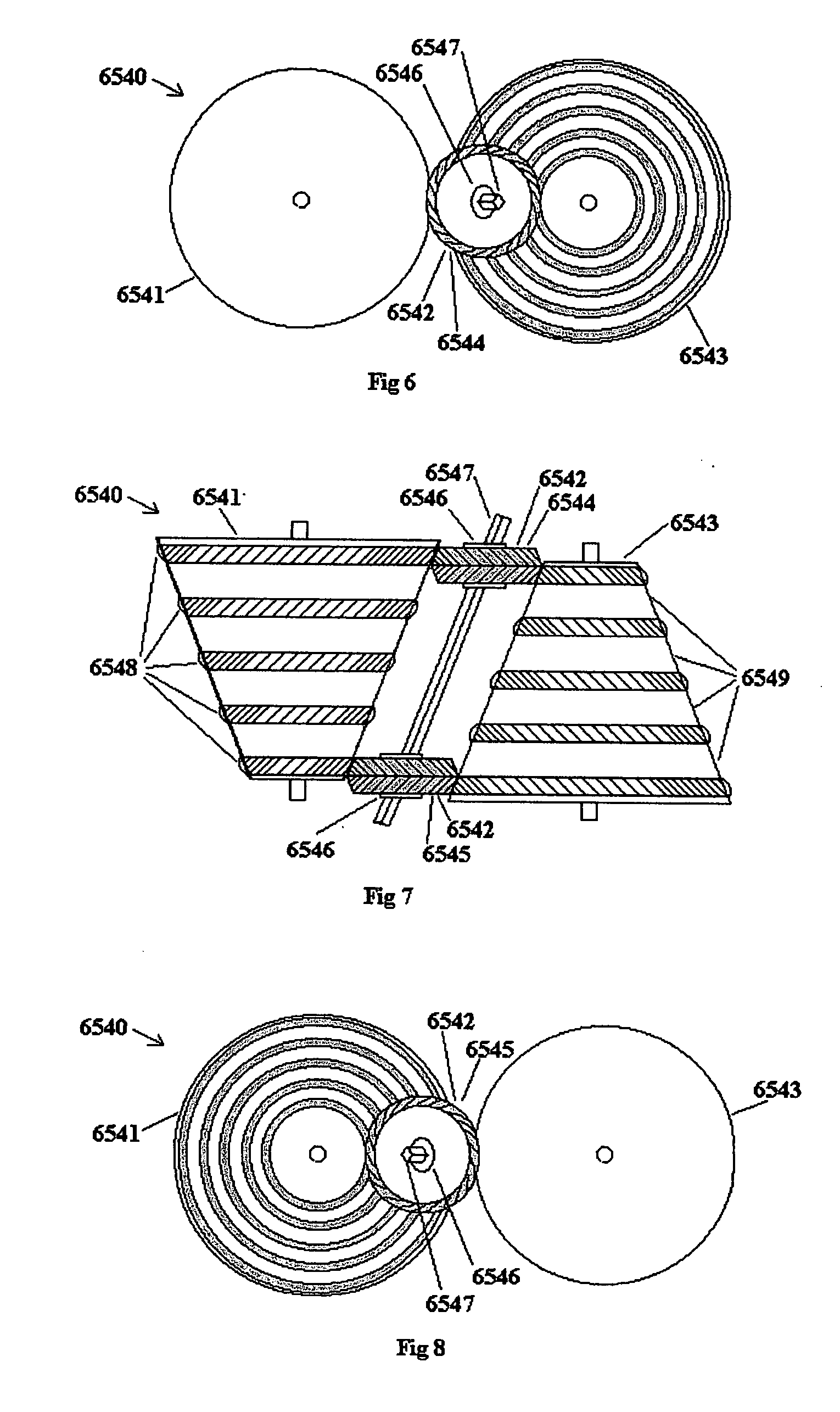Transmission systems
a transmission system and transmission shaft technology, applied in the field of transmissions, can solve the problems of unworkable lateral movement of inner and outer shafts, and inability to work, and achieve the effect of minimizing slippage and high surface conta
- Summary
- Abstract
- Description
- Claims
- Application Information
AI Technical Summary
Benefits of technology
Problems solved by technology
Method used
Image
Examples
Embodiment Construction
[0079] The basic principle of a friction tooth drive 6500 is explained with reference to FIGS. 1-5. Cone 6501 with ring teeth 6502 is engaged with a conic gear 6503. This is an Ashbey surface interface. A side view of a ring tooth 6502 on the friction tooth cone, referred to herein as a “friction tooth 6505” is shown in FIG. 2 as a conic tooth with portions 6509, 6510 removed; leaving sloped ends 6506, 6508 and a mid-section 6507. The mid-section 6507 is where normal tooth engagement occurs. The sloped ends have two functions; it provides the friction tooth 6505 with a place to slide onto a conic tooth converting from a friction to a tooth drive, and provides the friction tooth 6505 with a place to slide from a conic tooth to a friction surface converting back to a friction drive. The tooth space 6511, 6512, 6513 in FIG. 2 and FIG. 3 shows the cone's surface ramping down 6511 to a normal clearance space 6512 for meshing teeth. When the friction tooth 6505 is slid from the conic teet...
PUM
 Login to View More
Login to View More Abstract
Description
Claims
Application Information
 Login to View More
Login to View More - R&D
- Intellectual Property
- Life Sciences
- Materials
- Tech Scout
- Unparalleled Data Quality
- Higher Quality Content
- 60% Fewer Hallucinations
Browse by: Latest US Patents, China's latest patents, Technical Efficacy Thesaurus, Application Domain, Technology Topic, Popular Technical Reports.
© 2025 PatSnap. All rights reserved.Legal|Privacy policy|Modern Slavery Act Transparency Statement|Sitemap|About US| Contact US: help@patsnap.com



